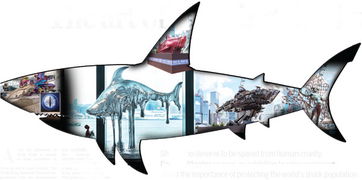Embarking on a fishing adventure in the serene waters of a lake or reservoir can be an incredibly rewarding experience. Whether you're a seasoned angler or a beginner looking to hone your skills, there are several techniques and tips that can help you catch more fish and enjoy your time on the water. Below, we delve into the art of lake and reservoir fishing, offering practical advice to help you become a more skilled angler.
Understanding Lake and Reservoir Dynamics

Before you cast your line, it's crucial to understand the unique characteristics of lakes and reservoirs. These bodies of water are typically larger than ponds and rivers, with varying depths, shorelines, and vegetation. Here's how to get a grasp on these dynamics:
Map Your Water: Obtain a detailed map of the lake or reservoir. Mark points of interest such as shallow flats, deep holes, weed beds, and structure like fallen trees or rocks.
Study the Weather: Wind patterns, water temperatures, and weather changes can significantly impact fish behavior. Pay attention to these factors and adjust your strategy accordingly.
Seasonal Patterns: Fish behavior changes with the seasons. During spring, look for spawning fish in shallow areas. In summer, they might move to deeper, cooler waters. Fall brings a return to shallows, and winter fishing often requires targeting fish in the deepest parts of the lake.
Choosing the Right Equipment
The right equipment can make a significant difference in your fishing success. Here's what you'll need:
Rod and Reel: Match your rod and reel to the type of fishing you'll be doing. For lakes and reservoirs, a medium-heavy to heavy-duty rod with a good quality reel is ideal.
Line: Use a monofilament or fluorocarbon line that matches the clarity of the water. Clear water may require a lighter line, while murky water can handle a heavier one.
Lures and Baits: A variety of lures and baits will give you more options. Soft plastics, spinnerbaits, crankbaits, and live bait are all effective.
Techniques for Success
Once you have your gear, it's time to put some fishing techniques into practice:
Topwater Fishing: Cast a topwater lure on the surface to attract fish that are feeding near the top. This technique is great in the early morning or evening when fish are most active.
Deep-Dropping: If you're targeting deeper fish, use a weight or a deep-diving lure to reach them. Let your lure fall to the desired depth before beginning your retrieve.
Trolling: Drag a lure behind a moving boat to cover more water. Adjust your speed and depth to match the fish's behavior.
Fishing Structure: Fish tend to congregate around structure such as submerged logs, rocks, or vegetation. Cast to these areas and work your bait or lure through the cover.
Live Bait: Live bait can be incredibly effective, especially for larger fish. Minnows, nightcrawlers, and leeches are popular choices.
Maintaining Your Equipment
Proper maintenance of your fishing equipment is essential for long-term success:
Clean Your Gear: After each use, rinse your gear with fresh water to remove salt or fish slime.
Check Your Line: Inspect your line for nicks, kinks, or fraying. Replace it if necessary.
Oil Your Reel: Regularly oil your reel's moving parts to prevent rust and ensure smooth operation.
Fishing Etiquette and Conservation
Lastly, always practice good fishing etiquette and conservation:
Respect Nature: Leave the area as you found it, and be mindful of other anglers and wildlife.
Follow Regulations: Adhere to fishing regulations regarding size, number, and type of fish you can keep.
Practice Catch and Release: When fishing for species that are abundant or non-game fish, consider releasing them to ensure a sustainable fish population.
By applying these lake and reservoir fishing techniques and tips, you'll be well on your way to becoming a more skilled angler. Remember that fishing is as much about patience and understanding as it is about technique. With time and practice, you'll develop a deeper connection with the water and the fish that call it home. Happy fishing!












